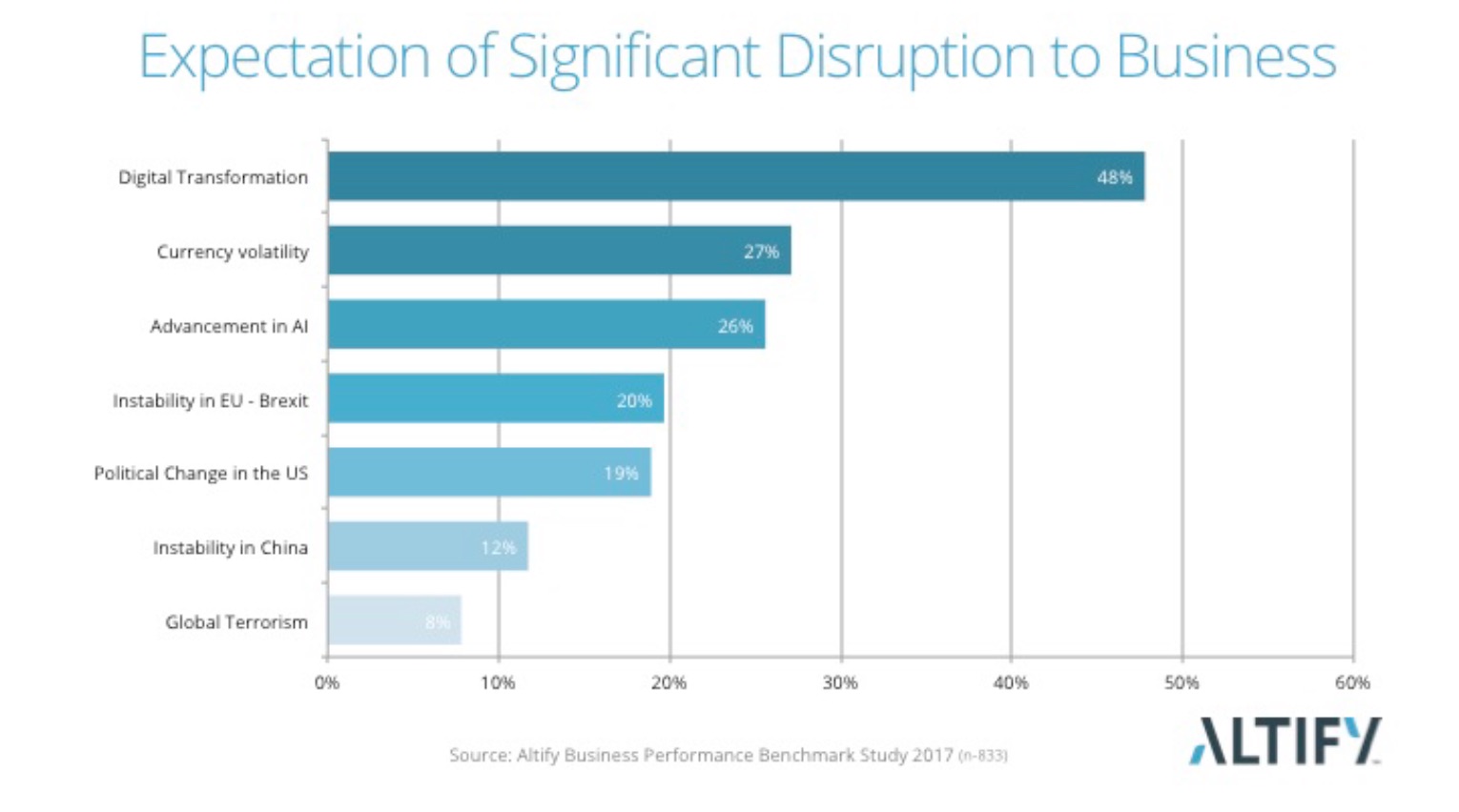
The gap between business strategy and traditional areas of procurement focus widens with each passing day.
This is the single biggest risk for procurement today. Every day we stand still brings us another day closer to redundancy.
The Altify Business Performance Benchmark Study 2017, conducted in conjunction with IDD Consult, just came across my desk, and it covers a number of fascinating insights into the minds of buyer, sellers, and company executives.
The study should be a wake up call for procurement professionals who continue to focus the majority of their efforts on savings. It turns out – although it should be no surprise – that company leaders just aren’t that interested in pursuing cost reductions compared to the other strategic levers they can pull.
Is procurement speaking savings while the business speaks another language?
As a procurement professional, do you communicate the value you contribute to the business in savings? According to a just published study, you may be barking up the wrong tree.

Customer retention and revenue growth are more than twice as important as cost reduction.
I used to be guilty of lamenting over the fact that procurement often does not have a seat at the table. Now I cringe every time I hear that expression. The reality is that we have to provide something that is perceived as having value to our internal stakeholders to then have the opportunity to work with, and influence them. It’s Sales and Marketing 101. So, if our executives care about customer retention and revenue growth, shouldn’t we be doing everything we can to support those objectives?
Digital disruption – not savings – is what keeps executives up at night

While business leaders are proactively pursuing customer retention and revenue growth, it is the impact of digital disruption on their business that causes them to break out in a cold sweat.
Interestingly, when you deep dive into the regional analysis, leaders outside of the America’s are also deeply concerned about the impact of currency volatility – something that procurement most definitely can take the lead in mitigating, at least on the supply side.
What does this mean for procurement?
To me, the study makes the following clearer than ever before:
- While cost savings help keep the lights on, and they play a role in helping the business invest in growth strategies, focusing on cost savings alone – and positioning our ROI based on savings captured – is not the way to your executive’s heart.
- We need to understand how our stakeholders impact the primary strategies of the business – for example customer retention and revenue growth – and determine how we can best facilitate their success. These may be unwritten, or they could be available for all to see as part of your organization’s vision and strategy. Then our actions can be aligned with their needs, and we really can become the trusted partner that we crave to be.
- We are perfectly placed to turn digital transformation from a fear into an opportunity and to disrupt rather than be disrupted. Digital disruption occurs from the outside in. The vast majority of new innovative tools, technologies, products, services, delivery models – you name it – are incubated, built, and commercialized outside of your enterprise. By understanding the disruptive innovation that is occurring within your category or supply markets, you can help your stakeholders achieve first mover advantage by leveraging disruption before your competition.
There is no day like today. Pause, reflect, and ask – are the strategies that I am pursuing aligned with the strategic focus of my stakeholders, executives, and the company as a whole? If not, it’s time to change!




